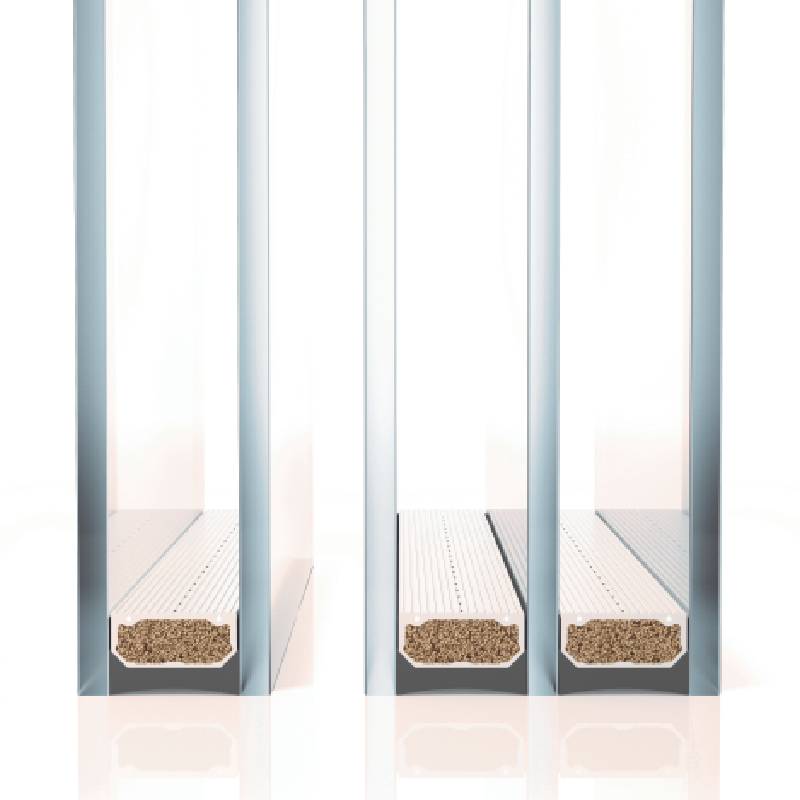

The Benefits of Low-E Glass in Double Glazing
In today's world, energy efficiency is more important than ever, both for reducing environmental impact and for cutting heating and cooling costs in homes and buildings. One of the most effective ways to achieve this is through the use of double glazing with low-emissivity (Low-E) glass. This technology not only improves thermal insulation but also enhances comfort and energy savings. This article will explore the benefits and applications of low-E glass in double glazing.
Understanding Low-E Glass
Low-E glass is a type of energy-efficient glazing that has been coated with a microscopic layer of metal or metallic oxide. This coating reflects heat back into the room while allowing natural light to pass through. The low emissivity refers to the glass's ability to reflect infrared radiation, which is responsible for heat transfer. In other words, low-E glass helps keep buildings warmer in the winter and cooler in the summer by minimizing heat loss and gain.
Improved Energy Efficiency
The primary benefit of low-E glass in double glazing is its superior energy efficiency. Traditional single-glazed windows allow a significant amount of heat to escape during the colder months and permit heat infiltration during the summer, leading to increased energy consumption for heating and cooling. With low-E double glazed windows, the efficient insulation helps maintain a stable indoor temperature, reducing reliance on HVAC systems. This can lead to substantial savings on energy bills, making it a wise investment over the long run.
Comfort Enhancement
Low-E glass contributes to enhanced comfort within a space. Without the extreme heat loss or gain, indoor environments become more stable and comfortable year-round. This is especially important in regions with severe temperature fluctuations. By using low-E glass, homeowners and businesses can enjoy consistent indoor temperatures, minimizing drafts and cold spots.
Moreover, low-E glass reduces glare caused by sunlight, making spaces more pleasant to be in, particularly for those working from home or spending long hours in front of screens. This benefit is often overlooked but is essential for creating a productive living and working environment.

Protection Against UV Rays
Another advantage of low-E double glazing is its ability to block harmful ultraviolet (UV) rays. These rays can cause fading of furniture, carpets, and artwork over time. Low-E glass is designed to filter out a significant percentage of UV radiation while still allowing natural light to enter. This not only prolongs the lifespan of interior furnishings but also enhances the aesthetic appeal of your living or working space.
Environmental Benefits
Opting for low-E double glazing contributes positively to the environment. By maximizing energy efficiency and reducing the carbon footprint of a building, low-E glass plays a crucial role in the fight against climate change. Reduced energy consumption translates to lower greenhouse gas emissions, making low-E solutions a sustainable choice.
In addition, many manufacturers are committed to producing low-E glass using environmentally friendly processes and materials. This aligns with a growing trend of sustainability in home and building design, appealing to eco-conscious consumers.
Conclusion
Low-E glass in double glazing is not merely an upgrade; it is a transformative feature that elevates the performance of windows. From improving energy efficiency and enhancing comfort to protecting interiors from UV damage, the benefits are numerous. As the construction industry moves towards more sustainable practices, low-E glazing has positioned itself as a frontrunner in energy-saving technology.
Investing in low-E double glazing is undoubtedly a smart choice, combining comfort, savings, and environmental stewardship. Whether you are building a new home or considering renovations, opting for low-E glass will not only increase the value of your property but also contribute to a healthier planet for future generations.